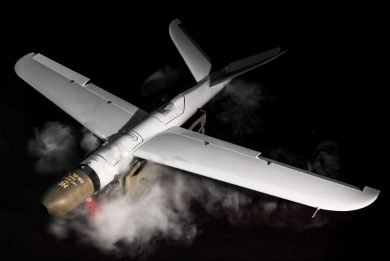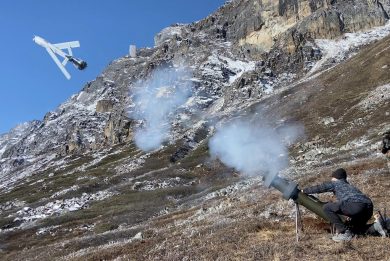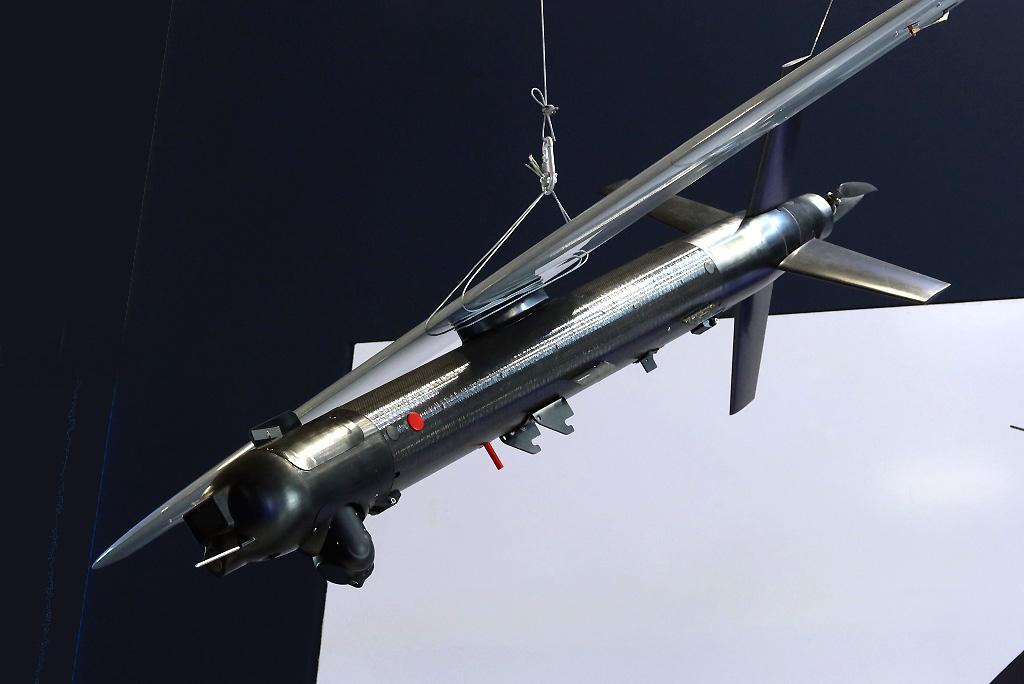
PAS 2023 – SpyX, the modular loitering munition by BlueBird Aero Systems
Specialised in unmanned air systems, at the Paris Air Show BlueBird Aero Systems of Israel launched its SpyX loitering munition adding one more product to that category of weapons
To develop its new SpyX loitering munition (LM) BlueBird Aero Systems heavily exploited the work done on its UAS, 80% of the munition coming from existing airframes according to the company, while only 20% was purposely developed.
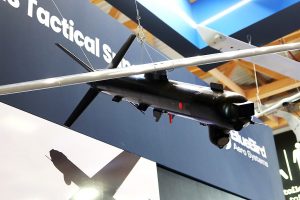
The SpyX architecture is very much similar to that of a conventional UAS, with a cylindrical body carrying at the front the sensors head and the warhead while at the back we find the battery and the electric motor that activates a two-blade propeller. The SpyX is 1.4 metres long and has a 2 metres wingspan, the high wing being quickly fitted to the fuselage using only three screws. What differs from UAS is the tail, which X-shape improves controllability at high angles of attack. With a take-off mass of 10 kg, the SpyX carries a 2.5 kg warhead and can fly for up to 1.5 hours at a distance of 50 km.
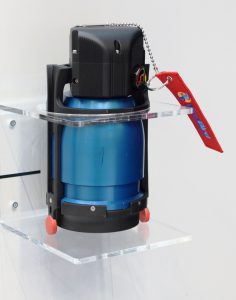
The system is operated by a two-man crew, one technician and one operator, deployment time being around 10 minutes. The crew opens the SpyX nose, inserts the warhead followed by the sensor head, while at the rear the battery is inserted. This modularity allows keeping warheads adequately protected and secured, while airframes can be stored in a standard warehouse, this also solving many air transport issues. Once ready the SpyX is installed over the pneumatic catapult for launch.
Very simple to operate, the ground control station (GCS) comes in the form of a ruggedized laptop, and is linked to the comms suite that includes the data link and antennas. The GCS is common to other BlueBird Aero Systems products; currently it can operate a single airframe, however the company is looking at the capability to operate multiple platforms from the same station in the future.
As said the warhead is inserted into the fuselage at the last moment, the operator being able to choose between two different solutions according to the type of target. For antitank missions an antitank warhead based on a shaped charge is available, which is capable to penetrate over 500 mm of rolled homogeneous armour. As for antipersonnel missions, a high explosive/fragmentation warhead ensures good lethality both against infantry in the open and lightly armoured vehicles. Both warheads are produced by a third party based on a BlueBird Aero Systems design, as the company is not active in explosive devices manufacturing.
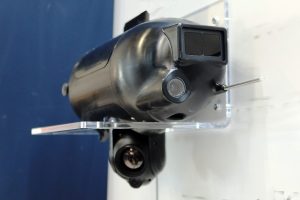
Thanks to its considerable endurance the SpyX can loiter for some time awaiting to identify the most valuable target before attacking, but it can also operate in tandem with a conventional/VTOL UAS that would carry out the targeting mission. The sensor payload includes a forward looking camera, a gimballed day/night optronic package that includes a daylight camera and an uncooled thermal imager, a LIDAR and an impact sensor. The man in the loop must validate the target prior to the attack, an artificial intelligence-based tracking system allowing the SpyX to autonomously follow the target. That said, the operator can abort the mission should the situation change; the control software provides the operator with a count-down of the time remaining to abort the mission, as well as with the amount of battery power available for carrying out a second attack mission. An electric-mechanic arming mechanism allows arming and de-arming the warhead.
In the attack phase the operator can select the required direction and angle of attack, maximum attack speed being 250 km/h when diving towards a tank, accuracy being less than one metre. When attacking infantry in the open the LIDAR allows detonating the fragmentation warhead at the right height over the target area.
The SpyX is in production and was already sold to one undisclosed customer.
Photos by P. Valpolini

